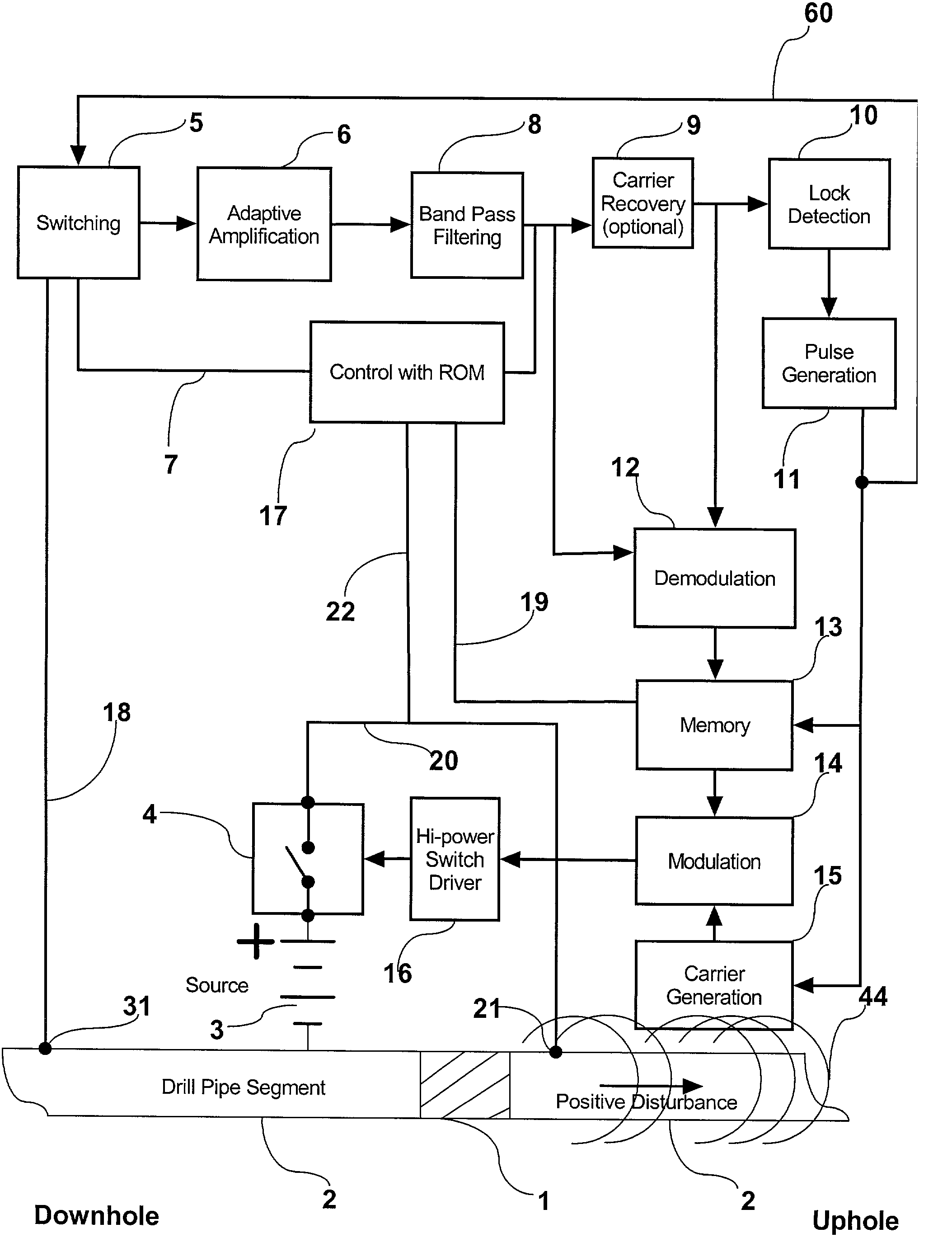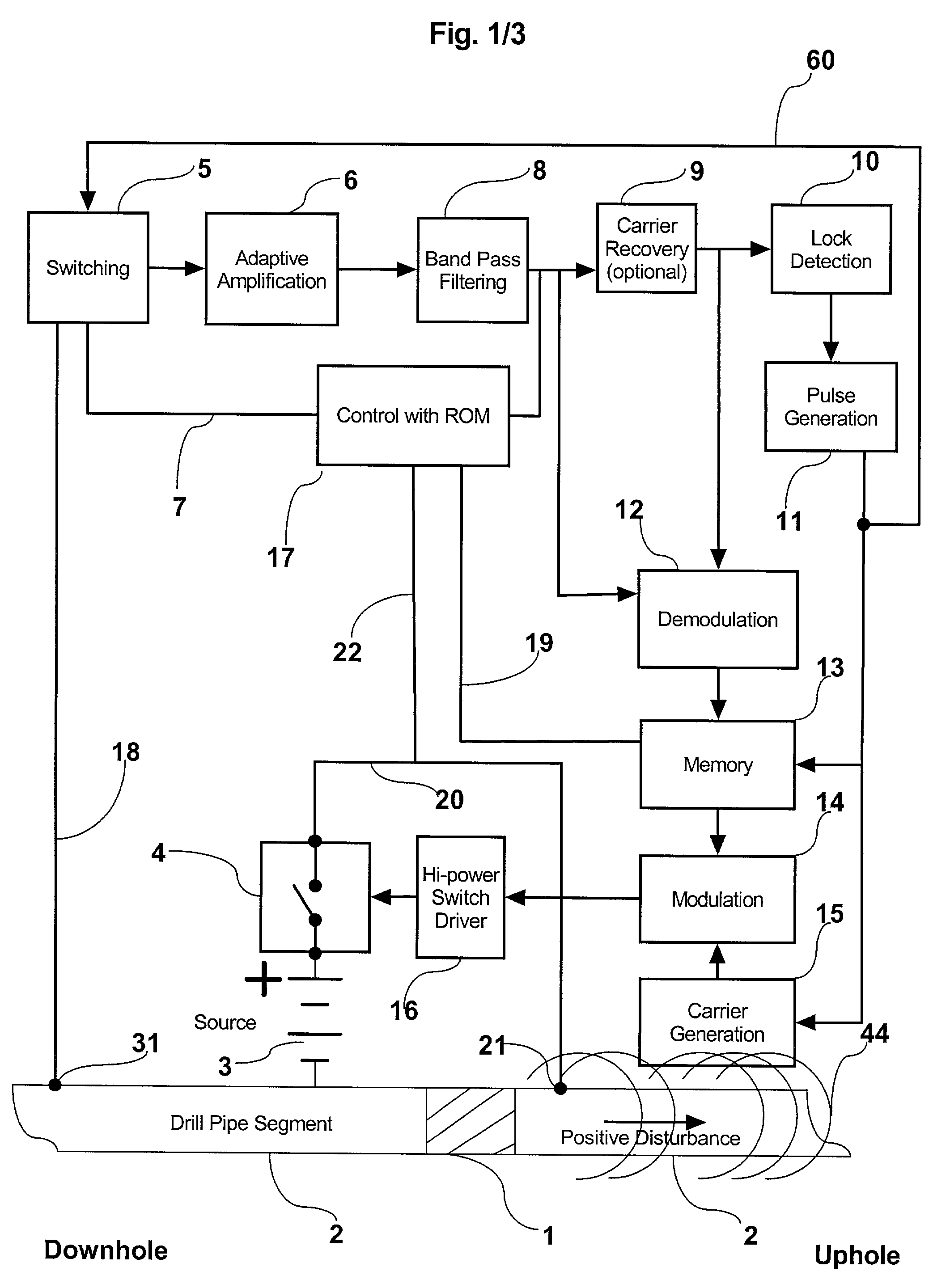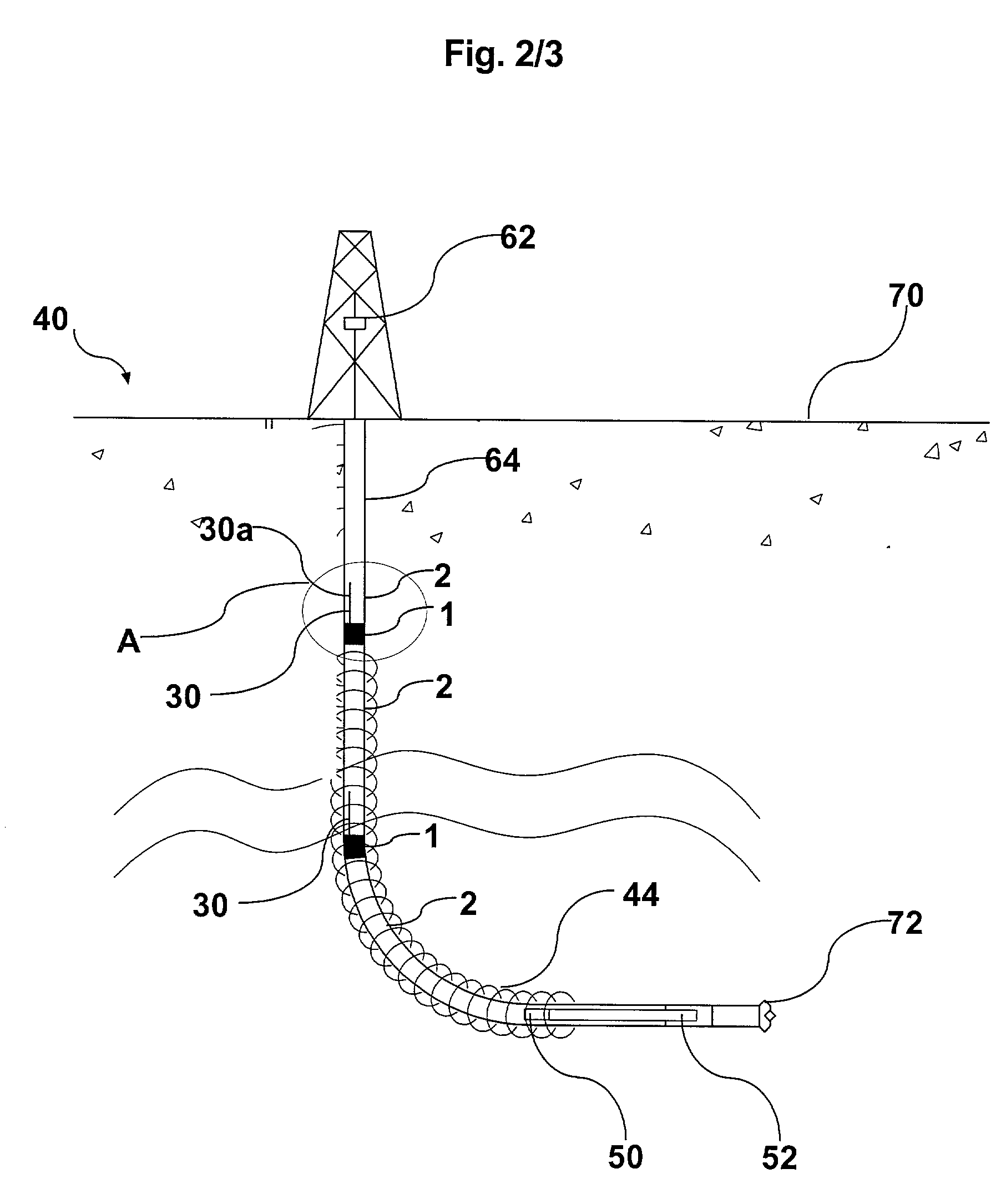Apparatus, system, and method for detecting and reimpressing electrical charge disturbances on a drill-pipe
a technology of electrical charge disturbance and apparatus, applied in the field of apparatus, can solve the problems of high power consumption, significant time-consuming installation, recovery, and high power consumption, and achieve the effects of prolonging battery life, desensitizing data reception, and lowering battery power consumption
- Summary
- Abstract
- Description
- Claims
- Application Information
AI Technical Summary
Benefits of technology
Problems solved by technology
Method used
Image
Examples
Embodiment Construction
[0075] Reference is to be had to FIGS. 1 & 2, wherein like items are identically numbered.
[0076] FIG. 2 shows a system 40 of the present invention, wherein a signal repeater 30 of the present invention is employed in order to receive a pre-modulated electrical signal 44 at insulating gap 1 in drill pipe string 2 that extends below the earth's surface 70. Signal 44 is generated by an off-the-shelf Downhole Sending Unit ("DSU") 50, which itself comprises a Code Sequence Generator ("CSG") (not shown) and a power source, typically a battery (not shown). DSU 50 generates signal 44 using data supplied to it by an off-the-shelf instrumentation package, such as a direction and inclination sensing device (i.e. a "D & I" unit) 52 commonly employed, in downhole drilling to provide information to a receiver 62 located above the earth's surface 70, to permit a drill operator to be apprised of the direction and inclination of the drill bit 72 at the lower most extremity of the well 64 as drilling...
PUM
 Login to View More
Login to View More Abstract
Description
Claims
Application Information
 Login to View More
Login to View More - R&D
- Intellectual Property
- Life Sciences
- Materials
- Tech Scout
- Unparalleled Data Quality
- Higher Quality Content
- 60% Fewer Hallucinations
Browse by: Latest US Patents, China's latest patents, Technical Efficacy Thesaurus, Application Domain, Technology Topic, Popular Technical Reports.
© 2025 PatSnap. All rights reserved.Legal|Privacy policy|Modern Slavery Act Transparency Statement|Sitemap|About US| Contact US: help@patsnap.com



